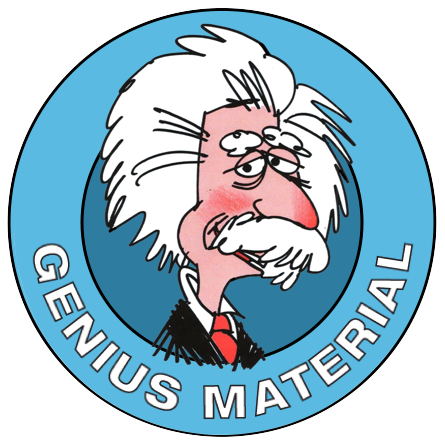 Here’s what you need to know about the Link Method
Here’s what you need to know about the Link Method
If you’ve ever had a spontaneous thought, triggered by something else; maybe something you see or hear… or a particular smell, you’ll realise that there must be all sorts of ideas connected in your brain that you’re blissfully unaware of, until all of a sudden… out one pops!
It’s how your brain works. Connections. And, contrary to what I was taught many decades ago at school, we now know that the brain continues to make new brain cells and new connections throughout life.
Providing you give it reason to!
When you learn new information, your brain is forced to restructure itself to accommodate your efforts.
You become brainier!
If you are revising for an exam and need to be efficient and effective with your time, you will deliberately work with the way that your brain naturally absorbs information. Your revision strategy will bear in mind that the brain learns by associating new information with that which you already know.
One learning technique, a mnemonic, which capitalises on this, is the Link Method.
In essence, the three stages of the Link Method are as follows:
- Break down complex ideas and find substitute words or parts of words to represent them.
- Create vivid mental images of those ideas by using your amazing imagination
- Find associations between those visual images
Let’s now break down those three steps
 1. Substitute words
1. Substitute words
With the Link Method, you’re aiming for a clear and distinct image associated with the idea it’s representing. If the word naturally lends itself to an image you can go straight to the next step. If not, break the word up into syllables and play ‘word association football’, paying attention to the sound blocks, to create memorable pictures associated with those sounds.
For example, ‘mortgage’ might become ‘moor’ ‘gauge’.
2. Vivid pictures
Since you’ll need to build strong connections between the ideas to use the Link Method, you will need memorable images, so don’t go for the obvious. Instead, go for something that stands out. At the very least, make sure that it’s an odd colour, bigger or smaller than normal. Remember the Von Restoff Effect and make it outrageous, rude, exaggerated, funny etc etc, because we know that it’s more likely to stick in your head.
3. Association
Now you need to imagine the first image doing something to the next image, which in turn does something to the next, etc etc, linking the ideas together like a string of pearls.
Use your imagination and run through the sequence a number of times until you can see that chain of events clearly in your mind, flowing just like a story.
And that’s the Link Method.
Give it a go and let me know how you get on.


